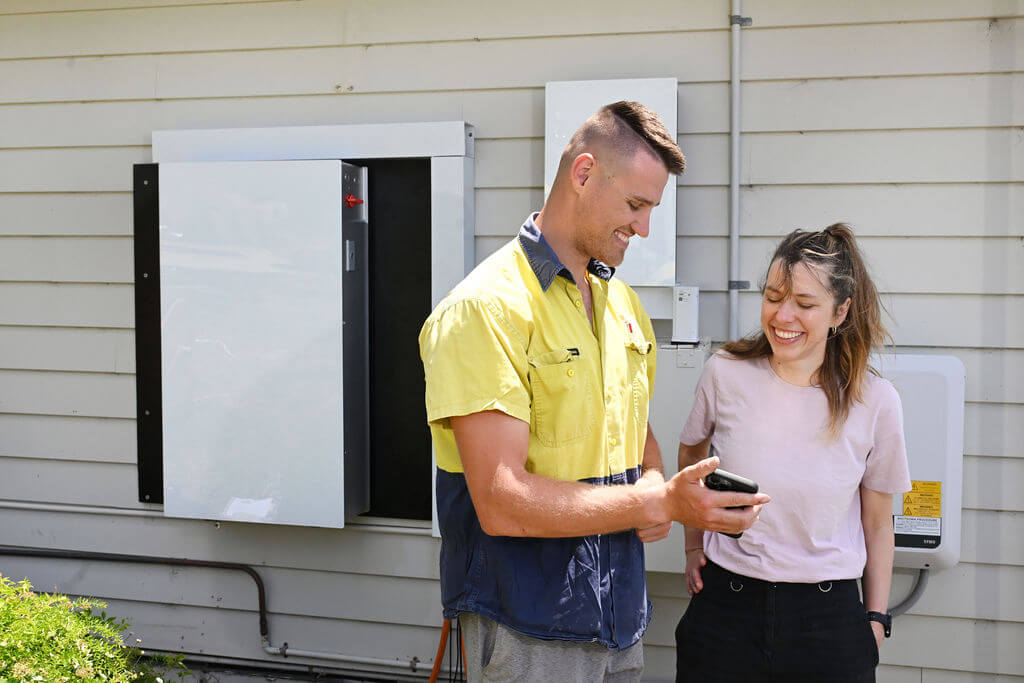Installing a battery can be a great way to make the most of the excess power generated by solar panels. However, every home or business has different requirements, and consumers need to know what to look for to ensure that they receive a battery that is tailored to the energy use of their home or business.
Before proceeding with installing a battery, we recommend following this checklist to ensure that you receive a compliant, high-quality installation from a reputable company.
Read our guide to owning a battery to learn how batteries work and how they can be installed safely at your premises.
- Obtain comparable quotes from multiple installers for your proposed battery system.
- Search for reviews of your preferred installer’s workmanship.
- Check that your preferred installer has a valid electrical contractor’s license at Service NSW.
- Check your preferred installer is accredited by an industry body such as Solar Accreditation Australia.
- If the quotation exceeds $20,000, check that the installer is eligible for Home Building Compensation (HBC) insurance at Service NSW and obtain a copy of the HBC Certificate, which includes your address and issue date.
- Obtain a written quotation from your installer including an itemised list of inclusions, installation times, a breakdown of costs and payment terms, any relevant warnings, and your rights, obligations and warranty details.
- Read and understand the warranty terms of your installer’s work.
- Discuss battery selection options with the installer, including:
- what battery capacity (in kWh) is appropriate for my energy consumption and solar system?
- which brands and models are known for their quality and warranty coverage?
- will the suggested battery work with my inverter and avoid warranty issues?
- Check the battery is on an approved list, which may include the Clean Energy Council approved battery list.
- Read and understand the manufacturer’s warranty terms for the battery.
- Research whether the battery manufacturer or regulator has issued any recalls of your chosen battery due to manufacturing faults or safety concerns.
- Discuss the proposed installation location of the battery and any safety risks associated with the selected location with the installer.
- Read our guide to owning a battery to find out more about how to safely operate and maintain a battery.
- Confirm that the battery has been identified with a 100 mm diameter reflective label displaying ‘ES’ and the UN number for the primary battery chemistry (e.g., UN3480). This helps identify the type of battery for Fire & Rescue, in case they ever need to respond to an incident at your home.
- Have the installer show you that the battery is operational (i.e. no warning lights, it can charge and discharge).
- Have the installer explain the basic operation of the battery and inverter, isolator switch, battery management system (BMS), warning lights and maintenance requirements.
- Make sure that the installer provides you with:
- the battery owner’s manual and warranty details
- an emergency response guide (ERG) (if available)
- a receipt including their business’ ABN, licence number, scope of work and contact information
- Familiarise yourself with the make, model, and capacity of the battery in case NSW Fire & Rescue ever requires this information.
Battery incentives
Find out more about our battery incentives and how you can take advantage of them.
Lower the cost of your new battery installation
Sell your excess stored energy to the grid
